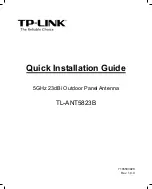
Page 105 of 113
i n t e l l i g e n t w i r e l e s s p l a t f o r m
airHaul
2
Nexus PRO™ User Guide
Appendix A – Points to Remember
Antenna
Frequency support
•
5GHz antennas will work between 5.2 and 5.8 GHz.
•
2.4 GHz band antennas will work between 2.4 GHz to 2.485 GHz
Gain
•
5 Ghz band antenna gain is 23 dBi.
•
2.4 Ghz band antenna gain is 24 dBi
•
29 dBi gain antenna is also available in request
Beam width
•
-3 dB Beam Width 10º -5GHz band antenna
•
-3 dB Beam Width 8º - 2.4 GHZ band antenna
Polarization:
•
Polarization -Linear Horizontal or Vertical
•
Factory assembled sB antennas are vertically polarized.
•
Polarity can be changed from vertical to a horizontal polarity by rotating the dish.
Mode of Operations
Different Modes of Operation
•
Repeater
mode
- Root Bridge & Remote Bridge/Router/NAT Mode.
•
Link Aggregate mode
- Root Router
- Remote Router/NAT Mode
Bridge mode
•
Device will act as a transparent bridge and will operate in Mac layer.
•
Bridge mode association is based on channel and MAC authorization only. ESSID will not
be used for the setting up a link.
•
If the remote client is configured in a bridge mode and channel needs to be changed then
channel needs to be changed at both the radios.
Router mode
•
Device will operate in layer 3 to perform routing. It is pure routing and network provider
has to take care of proper routing as there is no NAT feature in airHaul
2
Nexus PRO.
•
In a Router mode, the association is based on SSID.
•
Remote device configured in a Router mode will automatically follow the Root Bridge for
any change in channel. For this reason, the Remote Router/NAT mode is preferred.
Please select a channel with low interference for setting up a link in the beginning.
NAT mode
•
This mode allows a Local Area Network (LAN) to use one set of IP addresses for internal
traffic and a single wireless IP for external traffic. It provides a type of firewall by hiding
internal IP addresses and allows sharing by many computers behind the aCNPT. Since
these are done in the LAN there is no possibility of conflict with IP addresses in the public
or wireless network.









































